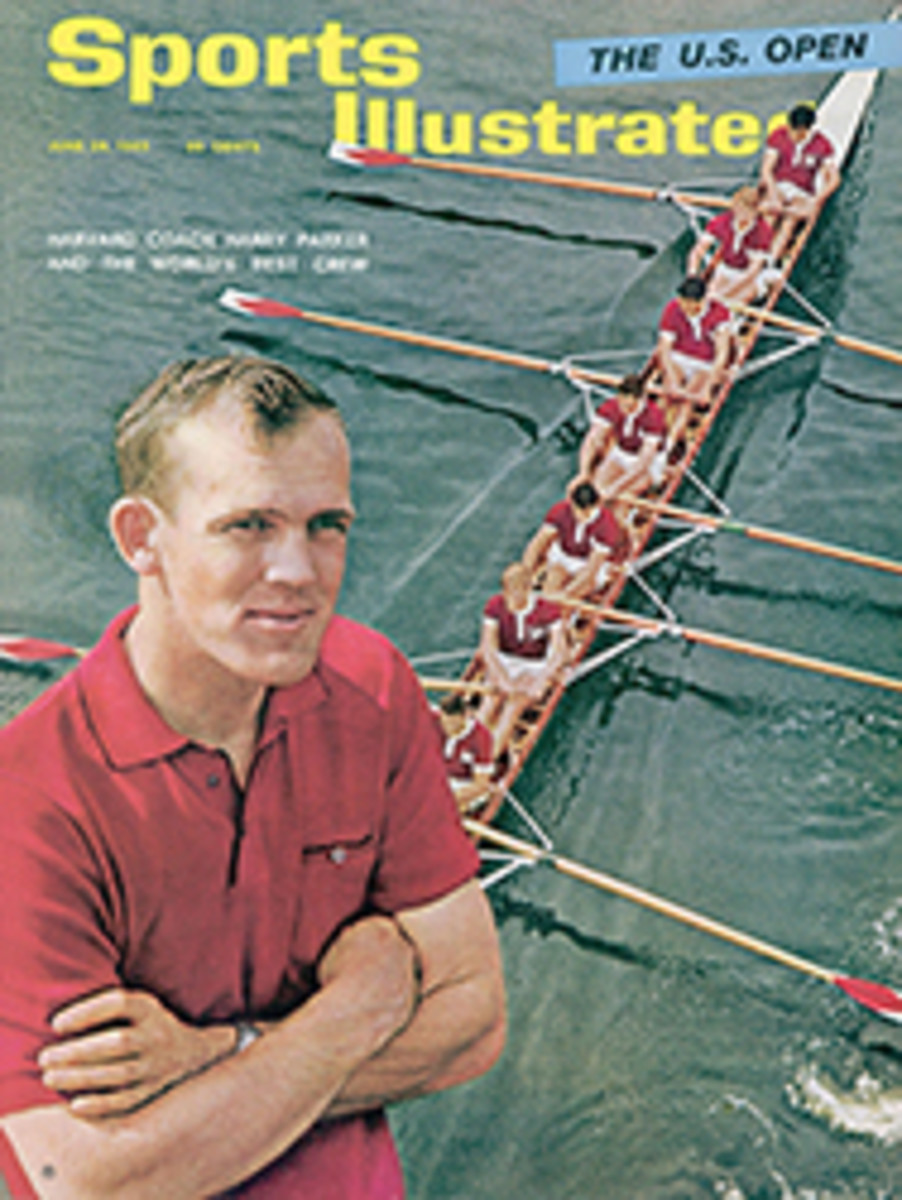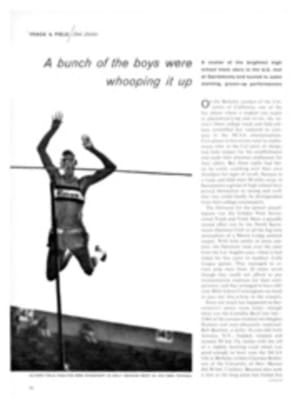
Former Champion René Lacoste has designed a new steel tennis racket
René Lacoste, a French tennis champion of the 1920s, is today perhaps better known for his style of shirts than for his style of play. In his heyday he was called the Alligator—possibly because he ate up opponents—and his shirts are emblazoned with a tiny alligator design. It was he who introduced the comfortable knit polo shirt to tennis, replacing the starch, cuffs and collars of an earlier day. Last year more than a million chemises Lacostes were sold in 60 countries. Now Lacoste, a silver-haired industrialist, has streamlined the steel-framed racket of the '20s, and he believes this new version will eventually replace the wooden racket. "Just like steel shafts replaced those of wood in golf clubs," he says. "The old prewar steel racket was very strong but had absolutely no elasticity or resiliency." His version, Lacoste insists, is different.
Lacoste's innovation, which looks like a large tea strainer, is made of chrome-plated steel tubing. The steel tube frame forms an inside groove in which a strip of crimped steel wire is placed. This "crown," as Lacoste calls it, is then secured by another steel wire wound in a spiral around the tubing, and thus becomes the anchor for the strings. No holes, which Lacoste says would weaken the frame, are needed. He prefers nylon to gut, but either may be used.
"The steel frame," says Lacoste, "gives a remarkable resilience and spring to the racket. The frame is much rounder and therefore more rational. The horizontal strings are almost as long as the vertical ones, giving them about the same tension. With a wooden frame, it is difficult to do this."
The slender tubing of Lacoste's frame comes down to form an open Y-shaped throat and shaft, cutting down wind resistance. The handle itself is made of light-weight plastic covered with leather. Because of the racket's aerodynamic shape and the whiplike action of its steel frame, Lacoste believes a player can hit a ball faster with less effort.
When strung with nylon, the Lacoste racket does not require a press. "You can leave it out in the rain or dip it into a bathtub," Lacoste says. It is not necessary to change tennis rules and regulations to permit the use of the new design for a simple reason: there are no rules governing shape and size of tennis rackets. "I once played," says Lacoste, "with a solid wood racket that resembled a large ping-pong paddle." The only real trouble with the new racket is that it is noisy. The steel frame acts somewhat like a tuning fork, and it emits a high-pitched ping whenever a ball is hit.
Currently four Paris sporting goods shops are selling the Lacoste racket for about the same price as a first-rate wooden one. With traditional gut, it is $40; with nylon string. $31; and unstrung, $28. It is not yet available in the U.S.
Although many people believe the steel-strung, steel-framed rackets of the '20s passed into oblivion along with tennis flannels, they are wrong. The Dayton Racquet Company of Arcanum, Ohio has been making steel rackets continuously since 1920, with the exception of the war years from 1942 to 1945. Most are sold to playgrounds. During the 1930s, the company experimented with steel rackets strung with gut and silk strings but found such rackets lacked the longevity of all-steel versions. In a recent test, a 240-pound football player stood on a Dayton racket without noticeably damaging it. The company makes four models, each available in light, medium and heavy weights, priced from $10 to $20.

